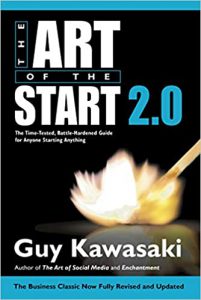Introduction
Starting a business is a big decision, and it’s not one to be taken lightly. There are a lot of factors to consider, from your business idea to your financial resources. But if you’re up for the challenge, starting a business can be a rewarding experience.
In this blog post, we will discuss the steps involved in bootstrapping a small business before taking on outside investment. We will cover everything from coming up with a business idea to marketing your business. By the end of this post, you will have a good understanding of what it takes to bootstrap a small business before taking on outside investment. At the end of this article, we will link you to some great reading resources to help prepare you for a successful business journey.
Step 1: Come up with a business idea
The first step in bootstrapping a small business is coming up with a business idea. This is the most important step, because it will determine the direction of your business.
There are a few things to keep in mind when coming up with a business idea. First, you need to choose a business that you are passionate about. If you’re not passionate about your business, it will be very difficult to succeed.
Second, you need to choose a business that has a market. There is no point in starting a business if there is no demand for your product or service.
Third, you need to choose a business that you can afford to start. Starting a business can be expensive, so you need to make sure that you have the financial resources to get your business off the ground.
Step 2: Do your research
Once you have a business idea, it’s time to do your research. This will help you to understand the market for your product or service and to identify your competition.
There are a number of different ways to do your research. You can read industry publications, talk to potential customers, and research your competition online.
Step 3: Write a business plan
A business plan is a roadmap for your business. It should include your business goals, your target market, your marketing strategy, and your financial projections.
A business plan is not just a requirement for getting funding. It is also a valuable tool for you to use to manage your business.
Step 4: Find ways to save money
When you’re bootstrapping your business, it’s important to find ways to save money. There are a number of different ways to do this. You can:
- Use free or low-cost marketing tools
- Work from home to save on rent
- Hire freelancers or contractors instead of full-time employees
- Use free or low-cost software
- Use AI tools that can save you time and money
- Do your own bookkeeping
Step 5: Market your business
Once you have your business up and running, it’s time to start marketing your business. There are a number of different ways to market your business. You can:
- Create a website
- Use social media
- Attend trade shows and networking events
- Run advertising campaigns
- Offer discounts and promotions
Step 6: Be patient and persistent
Starting a business is not easy. There will be ups and downs, but if you’re patient and persistent, you will eventually succeed.
Remember, success takes time and effort. Don’t give up on your dreams.
Step 7: Consider taking on outside investment
Once you have bootstrapped your business for a while, you may decide that you need to take on outside investment. There are a number of different ways to do this, including:
- Getting a loan from a bank
- Find Friends or Family that want to be in it with you
- Getting a grant from a government agency
- Getting an investment from a venture capitalist
When you’re considering taking on outside investment, it’s important to weigh the pros and cons carefully. Here are some things to consider:
- Pros: Outside investment can provide you with the capital you need to grow your business. It can also give you access to expertise and resources that you may not have on your own.
- Cons: Outside investment can come with strings attached. Investors may want to have a say in how your business is run. They may also want to take a share of your profits.
If you decide to take on outside investment, it’s important to make sure that you have a good understanding of the terms of the investment. You should also ensure you have a good relationship with your investors.
In conclusion,
Bootstrapping a small business before taking on outside investment can be a rewarding experience. However, it is important to be prepared for the challenges that come with it. By following the steps outlined in this blog post, you can increase your chances of success.
Here are some additional tips for bootstrapping a small business:
- Be patient and persistent. Starting a business takes time and effort. Don’t get discouraged if you don’t see results immediately.
- Be willing to work hard. Bootstrapping a business means wearing many hats. You will need to be willing to do whatever it takes to make your business successful.
- Be resourceful. There are a lot of free or low-cost resources available to help you start and grow your business. Be creative and resourceful in finding ways to use these resources to your advantage.
- Don’t be afraid to ask for help. There are a lot of people who are willing to help entrepreneurs succeed. Don’t be afraid to reach out for help when you need it.
If you are willing to put in the hard work and dedication, bootstrapping a small business can be a great way to achieve your entrepreneurial dreams.
Here are some additional resources that you may find helpful:
1) The Lean Startup by Eric Ries: This book is a great resource for learning how to start a business with limited resources.
Lean Startup book by Eric Ries
2)The Art of the Start 2.0 by : The Time-Tested, Battle-Hardened Guide for Anyone Starting Anything
The Art of the Start 2.0 by
3) The Startup Owner’s Manual by Steve Blank and Bob Dorf: This book is a practical guide to starting and running a successful business.
Startup Owner’s Manual book by Steve Blank and Bob Dorf
4)The 4-Hour Workweek by Timothy Ferriss: This book is a popular book about how to work less and live more.
4-Hour Workweek book by Timothy Ferriss
5)The E-Myth Revisited by Michael E. Gerber: This book is a classic book about the importance of systems and processes in business.
E-Myth Revisited book by Michael E. Gerber
We hope these resources help you on your journey to starting your own business.

